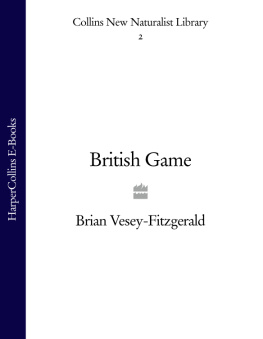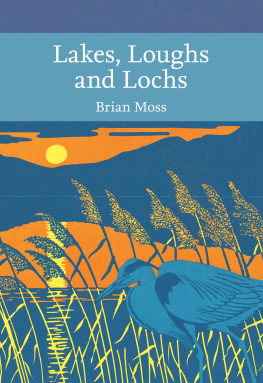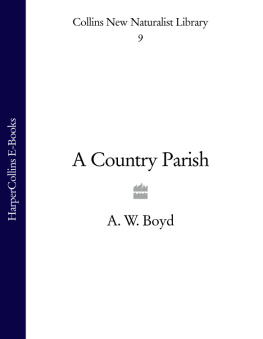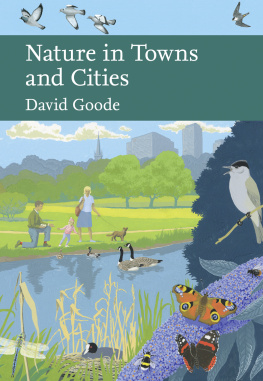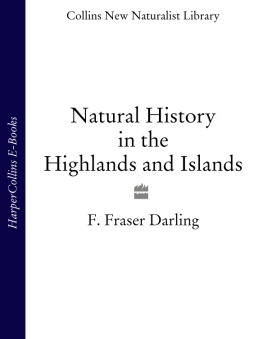JAMES FISHER M.A.
JOHN GILMOUR M.A.
JULIAN S. HUXLEY M.A. D.Sc. F.R.S.
L. DUDLEY STAMP B.A. D.Sc.
PHOTOGRAPHIC EDITOR:
ERIC HOSKING F.R.P.S.
The aim of this series is to interest the general reader in the wild life of Britain by recapturing the inquiring spirit of the old naturalist. The Editors believe that the natural pride of the British public in the native fauna and flora, to which must be added concern for their conservation, are best fostered by maintaining a high standard of accuracy combined with clarity of exposition in presenting the results of modern scientific research. The plants and animals are described in relation to their homes and habitats and are portrayed in the full beauty of their natural colours, by the latest methods of colour photography and reproduction.
TO THE MEMORY OF MY TWO FRIENDS
ABEL CHAPMAN AND PATRICK CHALMERS
WHO WERE BOTH GREAT SPORTSMEN AND GOOD NATURALISTS AND GREATER MASTERS OF PROSE THAN I SHALL EVER BE
BRIAN VESEY-FITZGERALD is the editor of The Field. He is, also, a considerable naturalist in his own right. It will be a simple matter for the reader to determine this for himself for, at every page, he will discover the original observations and personal opinions of the writer.
The aim of the New Naturalist series is to present British Natural History from the scientific angle. But the series does not eschew contributions from those who are not primarily scientists. Mr. Vesey-FitzGerald is, as a matter of fact, extremely well read in the scientific sides of the natural history of the birds and mammals with which he deals, but he is also a countryman of wide experience, a wild-fowler, Vice-President of the Gamekeepers Association, a friend of gipsies and, we suspect, of poachers. All of these things fit him well to describe the natural history of British Game and put it in a proper perspective.
British Game is a valuable possession which we must be at pains to manage properly. The future of game control and preservation is not going to be easy in a contracting British countryside; it is our hope and belief that this book will be a useful contribution to the solution of some of the problems that lie ahead.
THE EDITORS
I HAVE called this book British Game and some explanation seems to be called for. Strictly speaking, the title is a misnomer, for the number of birds legally entitled to be known as game is very small, and there is only one mammal that may be so known; whereas I have dealt with all those creatures which the sportsman pursues either for sport or because he thinks that they interfere with his sport.
The history of British Game is limited. If you are going to write a history of British Game you need not start before 1831, for the very simple reason that there was no legal game before that date. But very much the same creatures were pursued in Britain before then; have been pursued, I imagine, for just about as long as man has been in Britain. I am not writing a history of the pursuit of wild animals in Britain, so I do not propose to touch upon the methods of those who slung stones from slings or shot arrows from bows. In any case, I do not think that the sling and the bow (for no man used the crossbow, the bolt from which was propelled by pulling a trigger, for shooting birds, and the long-bow was a very different sort of weapon) can truly be regarded as substitutes for the gun. The earliest substitute for the gun was the hawk.
Hawking is of very ancient origin. The use of trained hawks seems to have developed first in early Thrace. They were certainly flown in England in Saxon times and probably earlier than that. I do not know that hawking had then become a science, and I should doubt if it had then advanced to the point at which you knew a mans social status by the hawk he owned. Time was when every man, according to his social rank, had a particular sort of hawk assigned to him. The more noble species, which were often imported at great cost from abroad, were reserved for kings and princes and noblemen: humble men had to be content with more lowly species. Thus the peregrine gentle, the gyr-falcon, and the goshawk were reserved for the gentry, the sparrow-hawk and the kestrel for those of humbler position, the sparrow-hawk coming by degrees to be identified with the Church (but not with bishops who were nobles), being the bird of the holy water clerk. The most popular (but by no means the most highly prized) bird was the goshawk. This was because both male and female goshawk are birds of very considerable bloodthirstiness when in pursuit of their quarry, but are remarkably mild and easy to handle. Moreover, goshawks were, and are, birds of the hand. That is to say, they were, and are, flown straight from the hand, from which they dash with the velocity of a shot from a gun. They had, and have, other advantages too. They do not have to be persuaded to return by the use of a lure. A goshawk is a bird that hits or misses, and if it is well trained (and if it is well trained it is also affectionate) it will immediately return to the hand after a miss (or maybe two misses) at its quarry. A good goshawk regards its masters hand as its home. The goshawk was the typical hawk of the English country gentleman, a bird to be carried about with one on ones walks abroad. (The falcon gentle, on the other hand, was more nearly allied to the chase and was usually carried by a mounted man, which, of course, made the whole thing, even in the days of the horse, more of a business.) And, of course, the goshawk was popular because in those days it bred in England and apparently in some numbers. Colonel Thomas Thornton, in his Northern Tour, which was published in 1804, states that he found the goshawk breeding in Rothiemurchus and Drumlochty, and from the former obtained his famous game-taking hawk which he christened Evelyn. I have seen doubt cast upon the gallant Colonels statement (and it is true that it is a bit difficult to swallow some of his adventures), but I cannot see why this should be so. The goshawk attempted to nest in Lincolnshire in 1864, but the female was shot. It did nest in Yorkshire in 1893, for a nest with four eggs was found and the female was shot. No doubt in Thorntons time it was very uncommon, but that does not mean that at a much earlier date it may not have been common, or at any rate fairly common, as a nesting species. Indeed, I am sure that it must have been, for it was the practice of the falconers of old to let their hawks go back to a free life in the woodland when the season was over, and the time they chose for this was the end of March or early in April. And they would let their hawks return to the wild in order that they might breed under natural conditions. The custom is mentioned as early as A.D. 995, when Archbishop Aelfric refers to it in his Colloquium. You will also find it mentioned in A Perfecte Booke for Kepinge Sparhawks, which is a sixteenth-century publication, and again you will find it in the Paston Letters.
Hawking became so popular, and so fashionable, that the most stringent laws were passed to protect the eyries and nests, and a very heavy fine or imprisonment were the punishments meted out to those who stole another mans hawk. Henry VII passed such a law. Henry VIII made it a felony to take the Kings nestling falcons or the eggs out of a nest, or to capture one of the Kings hawks and not to hand it over to one of the royal falconers within ten days. James I was very keen on all field sports, and devoted a good deal of time to hunting the hare with beagles and hawks (the hare has only recently been regarded as an animal to shoot) and also to flying his hawks at birds. He also spent a vast amount of money every year on hawks. It is a mistake to think that hawking was a cheap amusement. You can pay a very tidy sum for a pair of guns from a first-class gunmaker to-day, but you will be a fool indeed if you pay the price a pair of good hawks used to cost. Sir Thomas Monson, in the reign of James I, paid 1000 for a pair of goshawks, and money was money in those days. But hawks were also at one time a Kings ransom. One of the Crusader princes was ransomed from the Saracens for twelve Greenland Falcons. Twelve Greenland Falcons! Just think of what that means. It means, among other things, that there must have been a constant traffic between the continental mainland and Greenland and Iceland (for the ransom was paid in twelve months), and it also meant that falconry was pursued with zest and knowledge by the Saracen princes, and that they knew a Greenland falcon when they saw one. Our history books always leave out these interesting little details.

